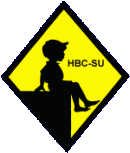
We note a range of different footwear types worn at English schools. Boys in the late 19th and early 20th century commonly wore high-top, heavy boot like shoes. Primary-boys after World War I often wore closed-toe brown "t" strap sandals. These sandals became so common at primary school that they became referred to as school scandals. Various types of sandals were worn, but by far the most common were the close-toe "T" strap style with a single side strap. Some younger boys or girls wore redish-brown or blue sandals or double strap sandals. Clark's school sandals were a standard. Some private schools required them. Sandals are still widely worn, but the center strap is now commonly quite thick. Sandals were not commonly worn at secindary schools, but through the 1960s we see the younger boys at some schools wearing them. This was rarely seen after the 1970s. Regular black oxfords were used for dress wear or by older boys. Another school standard was the plimsol, especially common in gym class. Boys did not begin wearing sneakers (trainers) to school until the 1980s, but many schools did not allow them. Boots became very fashionable in the 1970s and an issue at many schools which banned them.
Boys in the late 19th and early 20th century commonly wore high-top, heavy boot like shoes. Primary-boys after World War I often wore closed-toe brown "t" strap sandals. These sandals became widely worrn at primaey schools. Sandals were not commonly worn at secondary schools, but through the 1960s we see the younger boys at some schools wearing them. The standard secondary shoe was the black oxford. Regular black oxfords were used for dress wear or by older boys. Another school standard was the plimsol, especially common in gym class. Boys did not begin wearing sneakers (trainers) to school until the 1980s, but many schools did not allow them. Boots became very fashionable in the 1970s and an issue at many schools which banned them.
We note a range of different footwear types worn at English schools. These sandals became so common at primary school that they became referred to as school scandals. Various types of sandals were worn, but by far the most common were the close-toe "T" strap style with a single side strap. Some younger boys or girls wore redish-brown or blue sandals or double strap sandals. Clark's school sandals were a standard. Some private schools required them. They were not common at secondary schools, although until the 1970s some of the younger boys did wear them. Sandals are still widely worn in primary schools, but styles have changed. The center strap for boys' sandals is now commonly quite thick. Plimsols were worn for gym, but some primary schools allowed children to wear trendy smeakers (trainers). Some primary children wore wellies in wet weather. Many schools banned boots as foot wear when they became popular in the 1970s.
Navigate the HBC Country School Pages
[Ewturn to the Naun ciybtry dschool pages]
[Australia]
[Main England page]
[France]
[Germany]
[Italy]
[Japan]
[New Zealand]
[Scotland]
[Singapore]
[South Africa]
[United States]
Navigate the SCHOOL Section:
[Return to the Main English School Uniform Garment Page]
[Return to the Main school uniform page]
Navigate the Children in History Website:
 [About Us]
[About Us]
[Activities]
[Chronology]
[Clothing styles]
[Countries]
[Debate]
[Economics]
[Garment]
[Gender]
[Hair]
[History]
[Home trends]
[Literary characters]
[School types]
[Significance]
[Transport and travel
[Uniform regulations]
[Year level]
[Other topics]
[Images]
[Links]
[Registration]
[Tools]
[Return to the Historic Boys' School Home]
